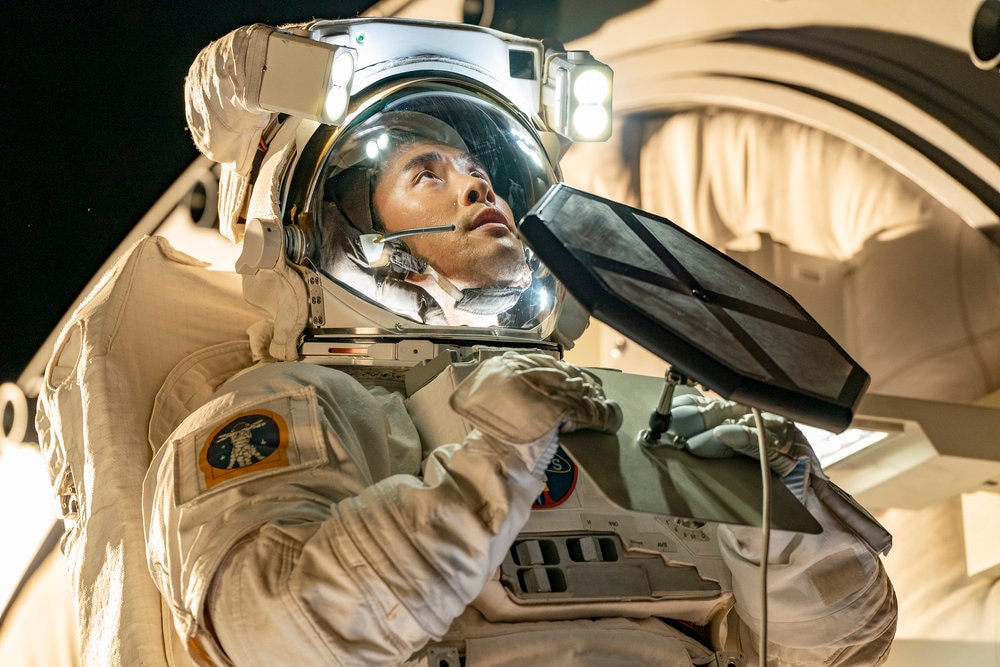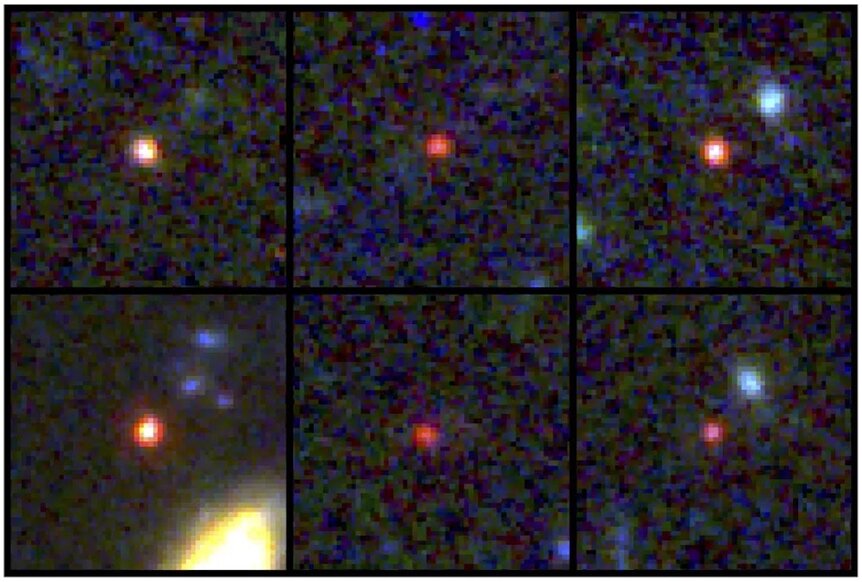Create a free profile to get unlimited access to exclusive videos, sweepstakes, and more!
JWST spies hulking galaxies near the dawn of the universe, upends settled science yet again
Yet again, the JWST has us questioning everything we know.

In the original Quantum Leap (now streaming on Peacock!), which aired from 1989 to 1993, Dr. Sam Becket (Scott Bakula) uses an experimental machine to travel through time and space, temporarily leaping into the lives of unsuspecting people. Each episode saw Beckett in a unique high stakes scenario, tasked with putting the timestream back onto its proper path, and hoping that the next leap would take him home.
By the end of the fifth season, when the show was cancelled, Becket had yet to make it home and a title card at the end of the final episode revealed that he never would. Now, 30 years later, Quantum Leap is back (airing Mondays on NBC and streaming next day on Peacock!) with a mix of new and old characters, including Ben Song (Raymond Lee), picking up where Becket left off.
RELATED: 'Quantum Leap' producer Deborah Pratt looks back on original series cliffhanger, reviving the legacy
The Quantum Leap machine has some drawbacks, of course. Not only is it two-for-two in trapping its users in a seemingly endless string of misadventures and half-lives, but it is also limited to the user’s own lifetime. Even if the machine worked as intended, researchers could only ever investigate periods within living memory. Certainly, there are plenty of interesting things to learn within the last century, give or take, but it’s an excruciatingly small slice of the history of our universe. To see further into the past, orbiting telescopes like NASA’s James Webb Space Telescope (JWST) are way better (though maybe not as entertaining during primetime) than malfunctioning top secret time machines.
When the JWST returned its first images in July of 2022, it really hit the ground running. After a series of calibrations, the telescope sent back its first batch of images including incredible views of the Southern Ring Nebula, Stephan’s Quintet, the Carina Nebula, and the galaxy cluster SMACS 0723. That last image, despite having the clunkiest names, was the piece de resistance. Due to some fortunate gravitational lensing, astronomers were able to capture light from galaxies which formed during the first billion years after the birth of the universe.
Shortly thereafter, Webb glimpsed even older galaxies, believed to have formed within the first 300 million years after the Big Bang. Now, new images are adding to the roster of early galaxies identified by the JWST. Images recently published in the journal Nature reveal six candidate galaxies dating to roughly 600 million years after the Big Bang. If there’s any lesson we can take from Quantum Leap and apply to our own real-world scientific investigations, it's to expect the unexpected (and don’t jump into experimental portals, but we digress). While these newly discovered galaxies aren’t the oldest we’ve ever seen — though they’re not far off — they are larger than anything we’ve seen from this time period. In fact, they’re larger than astronomers thought were possible that early.
According to their measurements, one of the galaxies has an estimated mass approximately 100 billion times that of the Sun, putting it on par with some modern galaxies and outweighing anything else from its era. Interestingly, while these candidate galaxies appear to have outsized masses, they seem to have been packed into comparatively small spaces.
RELATED: We finally know who sent Ben back in time on ‘Quantum Leap’
“The revelation that massive galaxy formation began extremely early in the history of the universe upends what many of us had thought was settled science. It turns out we found something so unexpected it actually creates problems for science. It calls the whole picture of early galaxy formation into question,” said Joel Leja, one of the study’s co-authors, in a statement.
Researchers note the possibility that some of their candidate galaxies are actually supermassive black holes and others may actually be smaller than they appear in the current data set. Still, researchers are confident that at least some of them actually are early massive galaxies, something which could be confirmed using sensitive spectroscopic data in future observations. If confirmed, the existence of massive galaxies so early in the evolution of the universe could open up exciting new avenues of research. Hopefully, without trapping anyone in a bizarre cosmic limbo.
Our problems can feel so small against so grand a backdrop, even if you’re quantum leaping wildly through recent history. Vicariously live a new life in every new episode of Quantum Leap, airing Mondays at 10/9c on NBC and streaming next day on Peacock.



























